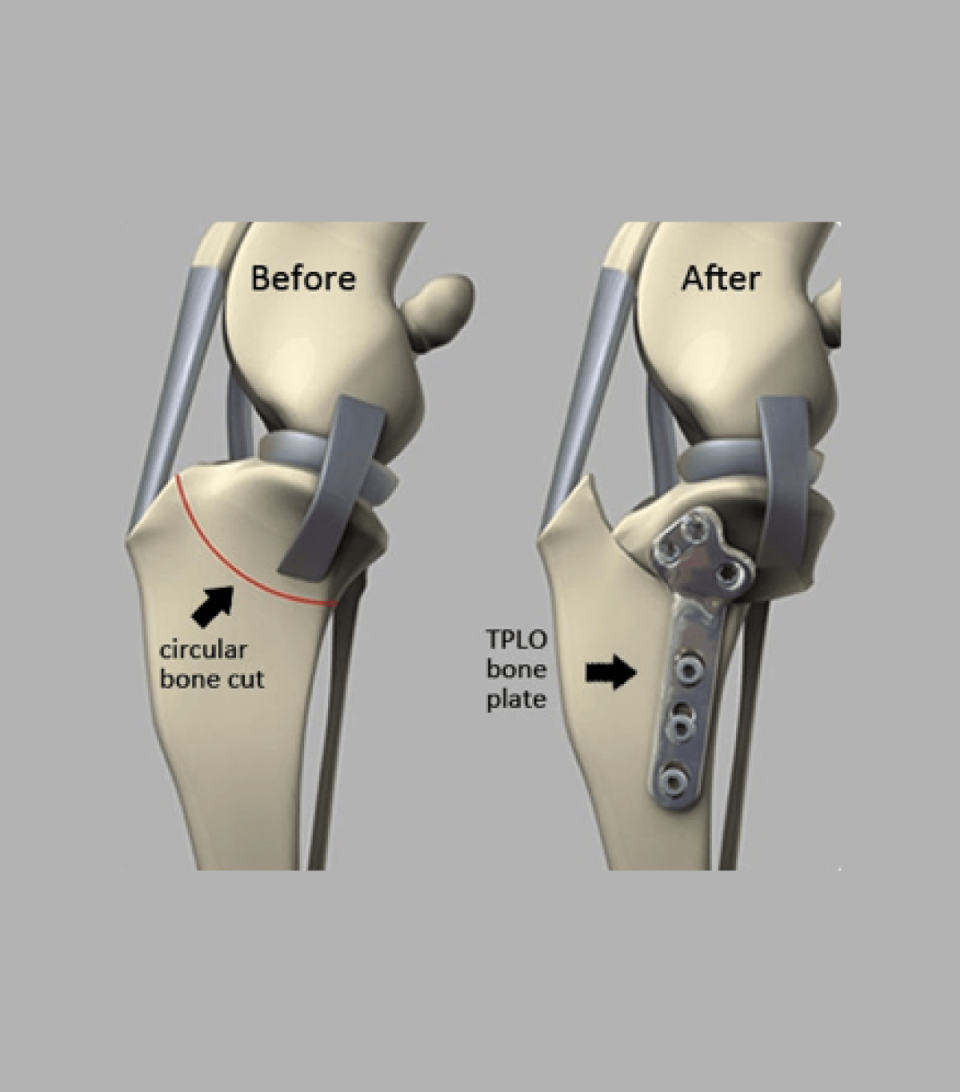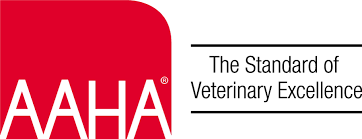
TPLO (Tibial Plateau Leveling Osteotomy) in Dogs
TPLO (Tibial Plateau Leveling Osteotomy) is a surgical procedure used to treat cranial cruciate ligament (CCL) injuries in dogs. The CCL in dogs is equivalent to the ACL (anterior cruciate ligament) in humans, and its rupture is one of the most common orthopedic injuries in canines.
Why is TPLO Needed?
When the CCL is torn, the knee joint becomes unstable, leading to pain, lameness, arthritis, and difficulty in movement. Unlike humans, whose ACL injuries often result from trauma, CCL rupture in dogs is typically due to degenerative changes over time. This leads to progressive weakening of the ligament, eventually causing it to rupture, often with minimal force.
TPLO is one of the gold standard surgical options for treating this injury, particularly in large and active dogs.
How TPLO is Performed
TPLO surgery involves restructuring the tibia to reduce the forward sliding of the femur over the tibia when the dog bears weight. Below is an outline of the procedure:
- 1. Pre-Surgical Evaluation:
- X-rays (radiographs) of the knee to assess the angle of the tibial plateau.
- Blood tests to check overall health before anesthesia.
- 2. Anesthesia & Preparation:
- The dog is placed under general anesthesia, and monitored closely by a licensed veterinary technician during the entire procedure.
- The surgical area is shaved and disinfected.
- 3. Surgical Procedure:
- A curved cut (osteotomy) is made in the proximal tibia (upper part of the shin bone).
- The tibial plateau (top part of the tibia) is rotated to a more level position
- A metal plate and screws are used to hold the tibia in its new position.
- This eliminates the need for the CCL by stabilizing the knee naturally
- 4. Closure & Recovery:
- The incision is closed with sutures or staples, and the dog is recovered from anesthesia.
Recovery & Post-Operative Care
- Strict Rest: Dogs must be kept on restricted activity for 8–12 weeks to allow proper healing.
- Pain Management: Pain medications (NSAIDs, opioids) and antibiotics may be prescribed.
- Physical Therapy: Gentle rehabilitation exercises help restore mobility
- Follow-Up X-Rays: Taken after 6–8 weeks to ensure proper bone healing.
Success Rate & Prognosis
- TPLO has a 90–95% success rate.
- Most dogs return to normal activity within 6 months.
- The procedure helps prevent arthritis progression and improves long-term mobility.

